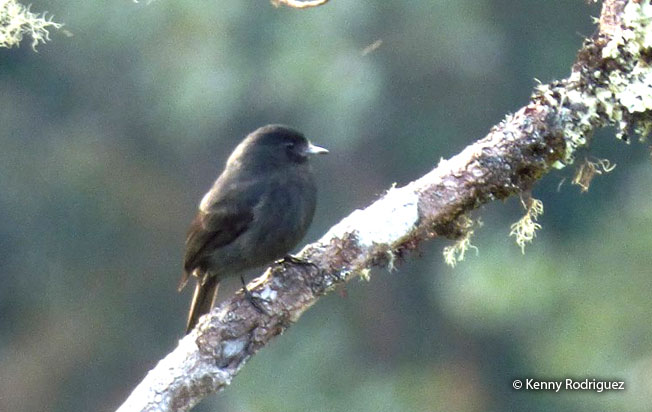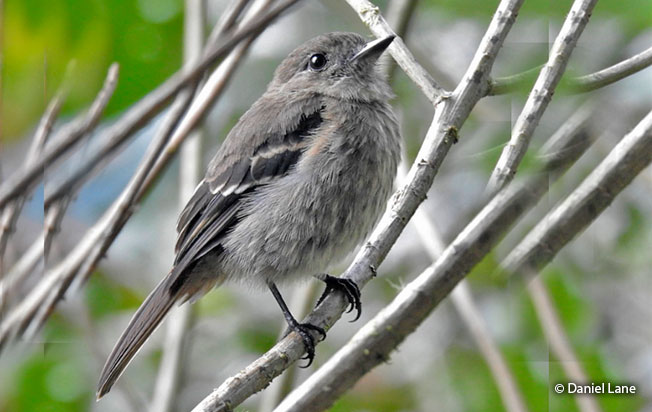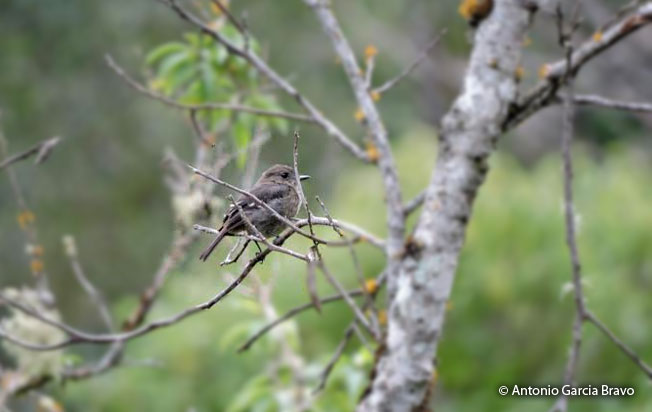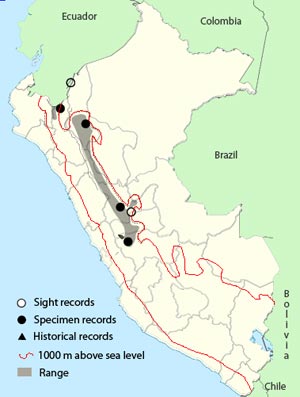Order: Passeriformes | Family: Tyrannidae | IUCN Status: Least Concern

Age: Adult | Sex: Male | Loc. Chido Trail, Amazonas

Age: Adult | Sex: Female | Loc. Owlet Lodge, Amazonas

Age: Adult | Sex: Female | Loc. Abra Patricia, Amazonas

Age: Adult | Sex: Female | Loc. Gocta Falls, Amazonas
Identification & Behavior: ~16 cm (6.2 in). The male Jelski’s Black-Tyrant is all dusky-gray with a mostly bluish-gray bill with black tip. The iris is dark. The female is mostly gray with two white wing bars. The uppertail coverts are tinged with brown. It forages at the edges of humid montane forest and humid montane scrub. It is very similar to the Plumbeous Black-Tyrant but these species replace each other geographically and their ranges do not overlap. Also, see White-winged Black-Tyrant.
Status: Endemic. The Jelski’s Black-Tyrant is uncommon to rare in montane forests of the east slope of the central and northern Andes at elevations ranging between 1800-2700 m.
Name in Spanish: Viudita-Negra de Jelski.
Sub-species: Jelski’s Black-Tyrant (Knipolegus signatus), (Taczanowski), 1875.
Meaning of Name: Knipolegus: Gr. knips, knipos= insect and lego= to pick. signatus: L. signare, signum= to mark or inscribe, to sign.
Distribution Map
 Voice
Voice
 Voice
Voice
Not known recording.
References:
-
- Species range based on: Schulenberg, T. S., D. F. Stotz, and L. Rico. 2006. Distribution maps of the birds of Peru, version 1.0. Environment, Culture & Conservation (ECCo). The Field Museum. http://fm2.fieldmuseum.org/uw_test/birdsofperu on 03/01/2017.